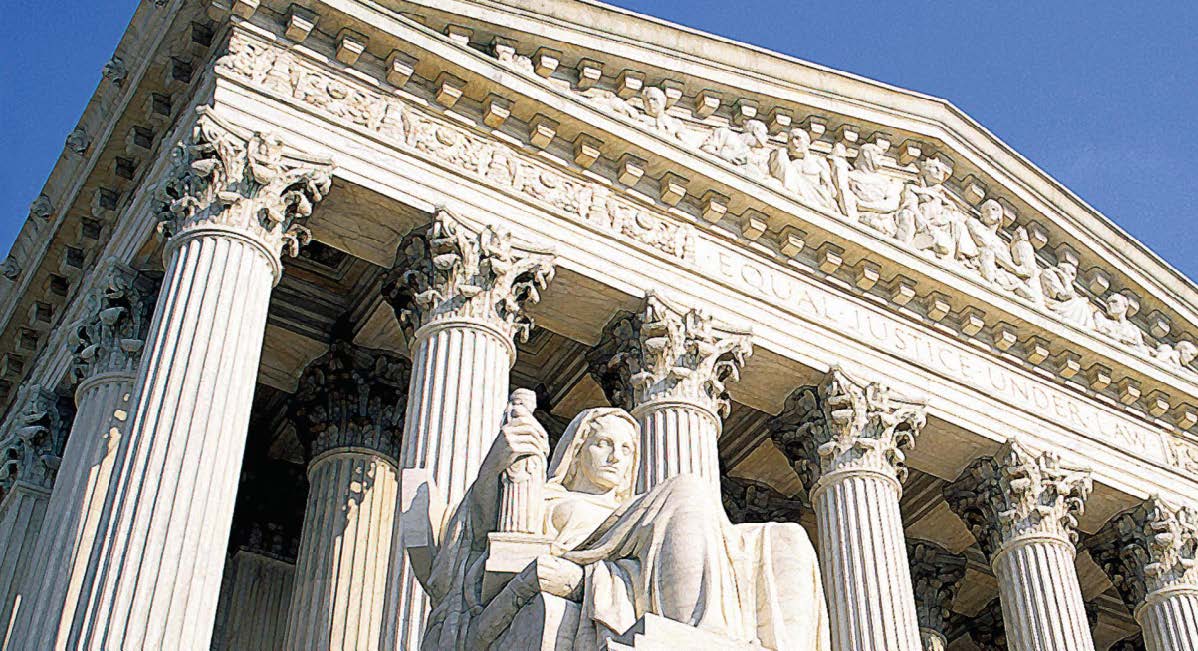
Many parents have had an experience similar to the one faced by Endrew F.'s parents, in which their child's IEP goals don't vary each year and there is lack of progress.
The recent Supreme Court case, Endrew F. vs. BY DIANA AUTIN, MARIA DOCHERTY AND LAUREN AGORATUS, M.A. Douglas County School District, has implications for parents participating in the IEP (Individualized Education Program) development for their child. The decision clarifies the rights of children with disabilities for a free, appropriate public education (FAPE) under the Individuals with Disabilities Education Act (IDEA).
This case is critical to ensuring that special education services meet the stated Congressional goal of IDEA: "Improving educational results for children with disabilities is an essential element of our national policy of ensuring equality of opportunity, full participation, independent living, and economic self-sufficiency for individuals with disabilities." It also supports the commitment of the US Department of Education "to ensure that all children with disabilities have available to them a 'free appropriate public education that emphasizes special education and related services designed to meet their unique needs and prepare them for further education, employment, and independent living.'"
The case also builds on the previous US Supreme Court case in Rowley, in which the Court held that students who require special education have a substantive right to receive free, appropriate public education (FAPE). The Court indicated at that time that this is met "if the child's IEP sets out an educational program that is 'reasonably calculated' to enable the child to receive educational benefit" that is more than de minimus (trivial). How much more than de minimus benefit is required is at the heart of the Endrew F. case.
What was the Case?
Endrew F. is a student with autism and challenging behaviors. His parents thought he had made little progress with the same goals year after year in a Colorado public school. They enrolled him in a private school for students with autism. His behaviors improved and he began learning at a faster rate.

What was at Stake?
The argument centered on what is meant by FAPE. It explained what constitutes an appropriate education and to what extent students with disabilities are entitled to progress in and benefit from their education under IDEA (Individuals with Disabilities Education Act.) The main question was: "Must schools provide a meaningful education in which children show significant progress and are given substantially equal opportunities as typical children, or can they provide an education that results in just some improvement?"
What did the Court Decide?
The Supreme Court overturned the Tenth Circuit's decision that Endrew was only entitled to an educational program that provided "merely more than de minimis" (i.e. minimal) educational benefit. Under the Tenth Circuit's ruling, the district only had to show that Endrew F.'s IEP was designed to provide more than trivial or minor educational benefit in order to meet its FAPE obligations. The US Supreme Court's unanimous decision requires that IEPs must have goals that are "appropriately ambitious" and that districts must be able to offer a "cogent and responsive explanation" for their proposed IEPs that show that each IEP "is reasonably calculated to enable the child to make progress appropriate in light of his circumstances." The Court held that each child with an IEP is entitled to "the chance to meet challenging objectives."
How Does it Affect Children in Special Education and their Families?
This decision clearly stated that FAPE under IDEA is a substantive right to an education that is designed to support student learning, and reinforced the importance of realistic but high expectations for students with disabilities. The outcome of the Endrew F. case reinforces the rights of students with disabilities and…
• Spelled out the standards for determining FAPE.
• Increases focus on student centered IEPs considering unique needs, abilities and circumstances.
• Supports rationale to request more intensive, specialized and related services if needed for appropriately ambitious, challenging objectives.
• When parents and districts disagree, the district has a responsibility to provide a cogent and responsive explanation for the proposed IEP that demonstrates that it is appropriately ambitious and that it provides the chance to meet challenging objectives.
Many parents have had an experience similar to the one faced by Endrew F.'s parents, in which their child's IEP goals don't vary each year and there is lack of progress. This court decision reinforces that IEPs must include annual goals (and as stated previously challenging objectives) that aim to improve educational results and functional performance for every child with a disability. The IEP must be aligned to both State academic content standards and ambitious goals. For students with the most significant cognitive disabilities, alternate academic achievement ambitious standards must be aligned with the State's grade-level content standards. Goals for these students must also be appropriately ambitious, based on the State's content standards, and again "reasonably calculated to enable the child to make progress appropriate in light of the child's circumstances."
IEP Teams must implement policies, procedures, and practices related to:
(1) present levels of academic achievement and functional performance;
(2) measurable annual goals, including academic and functional goals;
(3) how a child's progress toward meeting annual goals will be measured and reported, so that the Endrew F. standard is met.
Families must always remember that they are part of the IEP team. This new standard will require a "prospective judgment by school officials" that "will be informed not only by the expertise of school officials, but also by the input of the child's parents and guardians."
IEP implementation Tips
Questions asked during an IEP meeting should include:
➢ Have we given "careful consideration to this student's present levels of achievement, disability, and potential for growth?"
➢ Have we considered this student's "previous rate of academic growth, whether the student is on track to achieve or exceed grade-level proficiency, any behaviors interfering with the student's progress, and the parents' information and input?"
➢ Have we ensured this IEP includes challenging goals? Are these sufficiently challenging? Are they appropriately ambitious?
➢ Will this IEP allow this student to progress academically and functionally?
➢ Have we considered performance problems from the past year and parents' concerns in writing the goals, objectives and assessing what services are needed?
➢ How is this IEP reasonably calculated to enable this student to achieve passing marks and advance for grade to grade? And if that is not a reasonable expectation for this student, how is this IEP reasonably calculated to enable this student to make progress appropriate in light of his strengths and needs?
IEP Team members should consider how special education and related services have been provided, including the effectiveness of instructional strategies and supports and services with the student. The Team should consider the child's previous rate of academic growth, whether the child is on track to achieve or exceed grade-level proficiency, any behaviors interfering with the child's progress, and additional information and input provided by the child's parents. The IEP team must give "careful consideration to the child's present levels of achievement, disability, and potential for growth."
The IEP itself must aim to enable the child to make progress. It is an individualized determination that is unique to each child. The IEP should be reviewed at least annually to determine progress with periodic meetings throughout the year if warranted. If a child is not making expected progress toward annual goals, the IEP Team must review and revise the IEP. The parents of a child with a disability have the right to request an IEP Team meeting at any time.
As in the case of Endrew F., behavioral supports are also essential for successful outcomes. IEPs must include consideration of behavioral needs in the development, review, and revision of IEPs in order to provide FAPE. IEP Teams must consider behavioral goals and objectives and services and supports in the IEPs of children whose behavior impedes their own learning or the learning of their peers.
In summary, the Supreme Court's Endrew F. decision will help parents make sure that their child's IEP goals and objectives lead to better outcomes. Students with disabilities are entitled to FAPE and appropriately high expectations should be in place for all children.
"To meet its substantive obligation under the IDEA, a school must offer an IEP reasonably calculated to enable a child to make progress appropriate in light of the child's circumstances." (U.S. Department of Education quote)
Take-Aways
• Parents need to fully understand that their child is entitled to an IEP that enables their child to make academic progress - which means for most children, the opportunity to advance from grade to grade.
• Progress must be appropriate in light of the child's circumstances.
• The adequacy of a given IEP turns on the unique circumstances of the child.
• Every child should have the chance to meet challenging objectives.
• The Supreme Court clearly articulated a shift to higher expectations for children with disabilities.
• Advocacy begins and ends with the families directly impacted and the family organizations that educate and support them.